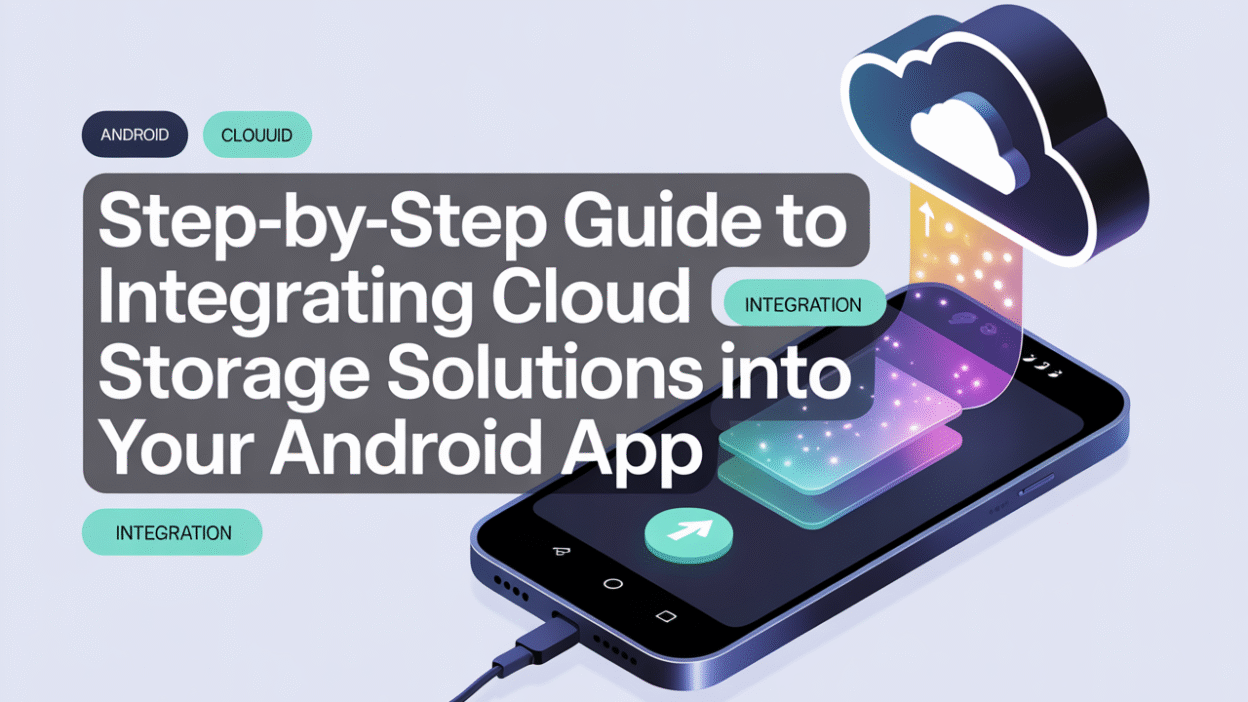Integrating cloud storage solutions into your Android app can significantly enhance functionality, scalability, and user experience. Whether you’re building a productivity tool, social media platform, or any app that requires persistent data storage, leveraging the cloud is essential for modern development. In this guide, we’ll walk through the steps to integrate cloud storage into your Android application using Firebase and other available tools.
Why Use Cloud Storage in Android Apps?
Cloud storage offers numerous benefits, including cost efficiency, improved performance, and enhanced data security . By storing data remotely, apps can offer seamless synchronization across devices, offline access, and scalable storage capacity. Developers also benefit from reduced infrastructure management overhead, allowing them to focus more on user-facing features.
Step 1: Choose Your Cloud Service Provider
There are several cloud storage platforms available for Android developers, including Firebase Cloud Storage, Google Cloud Storage, AWS S3, and Huawei AppGallery Connect . Firebase is one of the most popular choices due to its seamless integration with Android and real-time capabilities.
Step 2: Set Up a Project in Firebase Console
To get started with Firebase:
- Go to the Firebase Console.
- Click Create a Project, and follow the prompts to name and configure it.
- Once the project is created, click Add App and select the Android option.
- Register your app by providing the package name and SHA-1 key.
- Download the
google-services.jsonfile and place it in theapp/directory of your Android project .
Step 3: Configure Firebase in Your Android App
After downloading the configuration file:
- Add the Firebase SDK to your app-level
build.gradlefile:implementation 'com.google.firebase:firebase-storage-ktx' - Apply the Google Services plugin at the bottom of your app-level
build.gradle:apply plugin: 'com.google.gms.google-services' - Rebuild your project to sync dependencies.
Step 4: Initialize Cloud Storage in Your App
Once Firebase is configured, initialize the storage instance in your code:
val storage = Firebase.storage
val storageRef = storage.referenceThis reference allows you to upload, download, and manage files stored in the cloud.
Step 5: Upload and Retrieve Files
Uploading a file to Firebase Cloud Storage is straightforward:
val file = Uri.fromFile(File("path_to_file"))
val riversRef = storageRef.child("uploads/rivers.jpg")
riversRef.putFile(file)
.addOnSuccessListener { taskSnapshot ->
// File uploaded successfully
}
.addOnFailureListener { exception ->
// Handle errors
}To retrieve a file:
riversRef.downloadUrl.addOnSuccessListener { uri ->
// Use the URL to display the image or download it
}Step 6: Secure Your Data
Use Firebase Security Rules to control access to your storage buckets. These rules allow you to define who can read and write data, ensuring only authorized users interact with your cloud-stored files .
Step 7: Enable Advanced Features (Optional)
You can further enhance your app by integrating additional services like Firebase Authentication for user-specific storage paths or Cloud Functions to trigger actions when files are uploaded or modified.
Alternative Cloud Storage Options
If you’re not using Firebase, platforms like Huawei’s AppGallery Connect also provide cloud storage integration. You can enable it directly from the project dashboard under Build > Cloud Storage, then configure the storage instance as needed .
Conclusion
Integrating cloud storage into your Android app doesn’t have to be complex. With tools like Firebase, developers can quickly set up secure, scalable storage solutions that improve both functionality and user experience. By following these steps, you’ll be well on your way to building an app that leverages the full potential of cloud-based data management.


